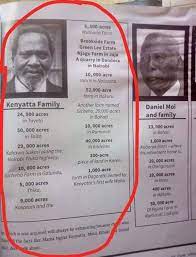 |
| Photo Credit: Westfm.co.ke |
Long before dining on Kamalasile (fresh blood) and Chingoling’o (clotted blood) made our bones strong for war and farming. Long before building fortified villages at Esilikwa. Before the old woman betrayed us to brown Arabs that drove us from the Land of Nabibia (Ethiopia). Long before the single-testicled man bore Nabongo, our leader. Before a brave young man had wrestled with the half-flying serpent snake at Mwiala. Before Nabukelembe prophesized the coming of termite-white visitors moving in granary-like objects.
Long before the goats had accepted to live among us while the steenbok/antelope ran to the thick bushes. Long before we came to be known as Siyanja Barende (the alien welcomers)...We were organized. We lived in sub clans and clans in larger clusters. Occasionally fighting but the wisdom of leadership gluing us together in peace. Clans are a major pillar in the Bukusu structural organization. Each clan has a distinct ancestor, beliefs, peculiarities, skills, and gifts of varying, at times in competing, magnitude. Today we revisit these mighty wheels that have propelled us this far; how clans emerged and what they stood and to this day, stand for.
Before understanding the beauty of such diversity, we recognize that we hailed from Mundu, our sole ancestor. That is why in 1862, Bleek, a Germany anthropologist (in A Comparative Grammar of South African Languages) of categorized us among the ‘Bantu’ since we belonged to communities whose word for man ended with suffixes, ‘ntu,' ‘tu’ or ‘ndu.' After countless years of living, Mundu begot Masaaba whose Wele Khakaba blessed with male two children, Mukisu (of Bagisu) and Mubukusu. As their children grew together, enmity broke, and that is when Mubukusu (Abrahamic father of Babukusu) decided to sojourned downwards towards Esilikwa. The narrative of migration is a lengthy one, of which we shall talk about another time.
Back to clan system, during periods of conflicts, droughts, and epidemics, the community often split with the hope of rejoining later. At times, they could join in later years. For instance, there is the story of Kitimule when he discovered that Bayumbu were indeed Babukusu who had split earlier on. In other circumstances, internal conflicts such a quarrel over grazing lands between close family members prompted one family to vacate only to found a clan or sub clan in another area. In such a case, peculiar characteristics would form a basis for naming a new clan. For instance, the children of an Omulako man would be named as Balako (ironmongers), or meat lovers (Bakhayama) or potters (Baumba) and so on. It is remembered that in olden times, lands were vast, uncolonized and one could settle anywhere they deemed safe and fertile.
In addition, death could also bring division. As was tradition, during sisyalukho (the funeral rites) people tended to speculate on the nature of death. If a brother or neighbor were perceived to have had a hand, they would migrate settling in new lands, probably founding new subclans. Besides, social outcasts associated with bulosi (witchcraft) or luswa such as having had sex with relative, animal or sodomy could be condemned and would also leave immediately. Such social deviates (be luswa) would be embarrassed and opt to leave. Then, in distributing bridal wealth or giving meat during ‘ox-splitting’ ceremonies, uncontended tribesmen would leave in anger choosing to savage clanal bonds and start a new life elsewhere. See the story of Bayemba where Nasokho broke away to form Bayemba Bakhayama away from the Bakhami (http://dimplesnet.blogspot.co.ke/2017/05/babukusu-lock-horns-with-iteso.html).
In other instances, hard-headed and defiant sons, uncomfortable with the lives of the homestead choose to defy the ways and seek a new life. Out of Nandakambilwa Kakona Khu Mwanda Kwencholi (An inadvisable man would lay his life on the doomed path), proverb is a narration. Silikhaya better known as Nandakambilwa, the son of Wamafwi, a famed elder choose to pursue the art of blacksmithery nearly dying at the hands of Masai Morans only to be later rescued by his father. While Nandakambilwa did not found a clan or subclan, in such prodigal-like fashion, many clans and subclans were founded.
In the same spirit, a famous and successful father having many sons would upon death bring about the brakeage so that the sons’ families live in separate regions to reduce conflict. For instance, Tukwiika (ancestor of Batukwiika) married six wives. They were, Nambobi, Nasakha, Naluleti, Nakitang’a, Nabukwangwa and Naluchekhe. Naluleti was Omurwa (Kalenjin) who Tukwiika married in peace times. Upon his death, each of the wives cared for their children who identified themselves to the mother’s name. They could self-introduce as I am Nakitang’a... or Nabukwangwa and so on. As time rolled by, they went different ways forming subclans under Batukwiika: Banamboobi, Baluchekhe, Bakitang’a, Babasaakha, Baluleti and Bakwangwa.
Then there were times when the community adopted victims of war, lone walkers or victims of drought. After a satisfying investigation that they posed no threat to the peace of the community, they could adopt ways of the clan, at times making a subclan. For instance, Masibayi (Masiribai) an open-minded, humble and peaceful Masai man came to live near Babukusu quickly adapting to their ways. He would later found the Basibayi. In fact, it was when Masibayi’s ox (the name remembered as Nalulingo wa Ngabo) was slaughtered that Nasokho complained to Bayemba that he had been given only cheekbones, thus founding Bakhayama affiliate of Bayemba.
In an old song that goes: Nambo Mukho Mwami, Katekhela Bakawale, Webilila Babewe [Nambo the elder’s wife, cooked for strangers (Bakawale old Bukusu word meaning unfriendly aliens), and ignored her own children]. The Bakamulyungu raiders had quietly sneaked in poor looking son whose Nambo adopted only for them to come attacking, they boy having dished out the community secrets.
Back to the story, in the same fashion as Masiribai, Tolomet an Uasin Gishu Masai elder running from extreme hunger among the Barwa found himself at Enakuti or Nabiratuku (present day Uganda) where Bukusu lived. Dirty, and malnourished, Tolomet would find refuge in the homestead of Mukhwana. He was given the work of khung’ilila litala (cleaning stables), khukhalanga kamalwa (frying beer) and clearing bushes in exchange for food and accommodation. Mukhwana was the son of Sengeli, son of Kubia Omukimweyi who is traced to Nakhumicha, an Omukimweyi daughter that Khisa father of Senior Namachanja married. (See the story of Namachanja: (http://dimplesnet.blogspot.co.ke/2017/03/sudi-wa-namachanja-political.html ).
However, one day, the wife of Mukhwana noticed that Tolomet wore ‘lichabe’ (ivory armband) and ‘enjabasi’ (elder’s ring) depicting his status. In an interesting turn of events, Tolomet would later be accorded respect and rewarded kindness and good service with wealth in cattle and land. To this day his descendants are known as Batolometi. Other Bakimweyi includes are known as Bakimweyi Banabuyoka (noisy-ones) [Mukhwana’s descendants] and Bakimweyi Banesoba.
Further, on the slopes of Sang’alo Hills, Bamwaya resided. The people used to confuse the name of one Omumwaya young man whose mother was Omuyumbu (Tachoni). They got used to calling him Omumweya instead of Omumwaya. Over time, his descendants came to be known as Bamwaya Bamweya, dividing the clan into junior and senior houses. The author cannot fail to offer a brief narrative about Bamwaya. One day, on a hunting trip into the forest, the two subclans competed for could climb the tree faster. Against all the odds, a boy from the junior house won the competition. The other fuming with anger speared dead the winning boy fuelling great. The kinsmen on realizing a growing enemy choose to separate the two subclans. The household from which the ‘killer’ boy hailed from moved to East Bukusu settling at the foot of Mt Elgon in present day Kimilili. The former, Bamwaya Bemwalo (Lower Mweya), stayed in the low lands. To this day, those who migrated east are called Bamwaya be Ngaki (Upper Mweya) also referred to as Balukulu (the Mountainous people).
But then, remember to ask your grandmother/father to give you the tale of the milk-spilling contest down the hill among the Babuuya during their sojourn in Buganda.
The Bukusu clanal diversity is interesting, isn’t it? Join me in part II as we dissert more on clans, subclans, and clusters.









